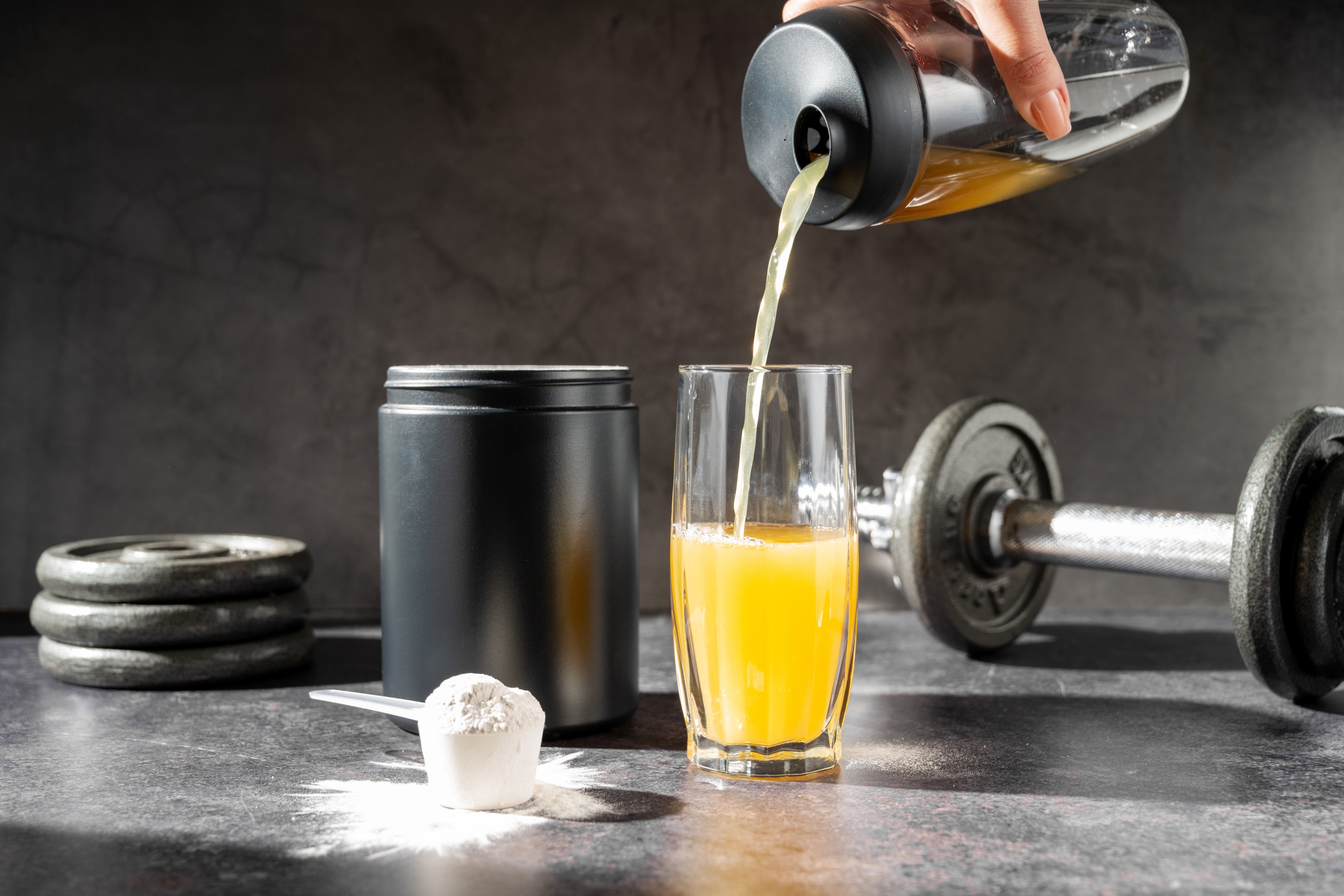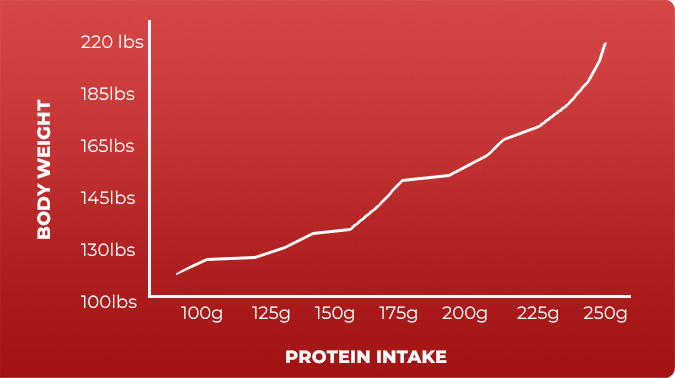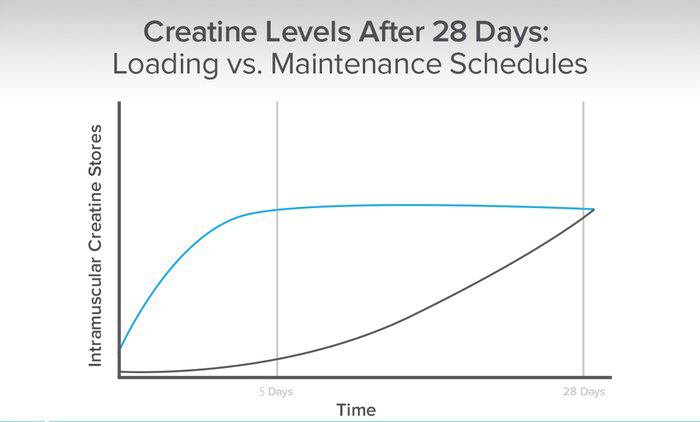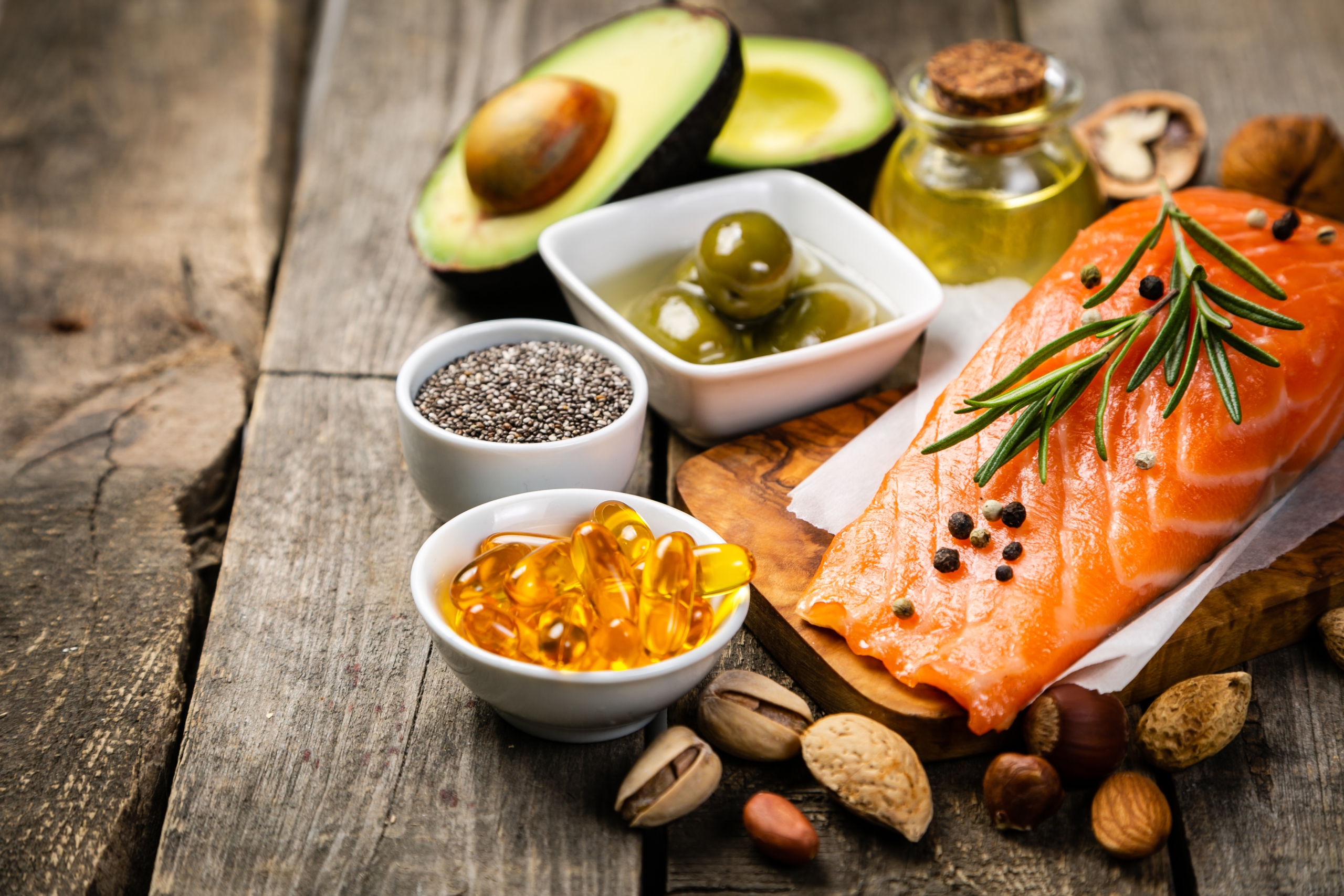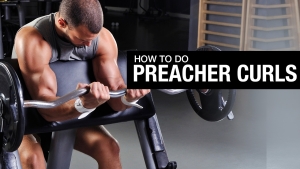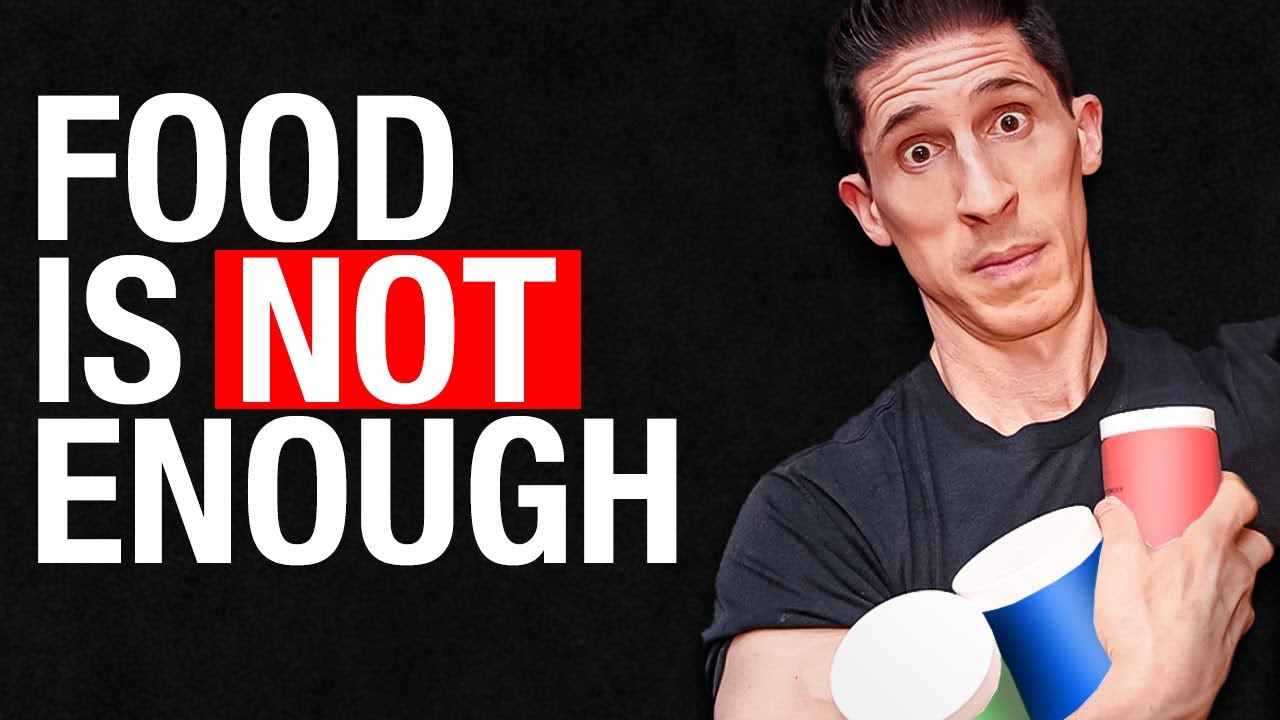
WHAT SUPPLEMENTS ARE BEST FOR BUILDING MUSCLE?
Let’s talk about a very popular topic: muscle building supplements.
Here’s the truth, there are tons of supplements out there.
So, it’s easy to get confused, frustrated, and even end up wasting your money.
You’ve probably heard people joke about “pissing away” their supplements—literally.
Your body doesn’t use them, and you’re left with expensive pee.
How do we avoid that? How do we make sure we’re actually getting our money’s worth?
Today, I want to focus on the muscle-building supplements that work.
I’m not saying these are the only ones out there, but if you want to boost muscle hypertrophy, strength, and recovery, these are the ones you should prioritize.
These aren’t just hype—they have proven benefits in clinical trials and research-backed reviews for athletes and people looking to increase lean body mass, improve muscle size, and enhance overall athletic performance.
Let’s dive in and see how these supplements can help you actually get results from your basic training.
BEST MUSCLE BUILDING SUPPLEMENTS
When it comes to building muscle, you need more than just a solid exercise program—you need the right fuel to maximize your results.
Supplements are key in helping you bridge the gap between your training efforts and optimal muscle growth.
But here’s the thing: not all supplements are created equal.
The best muscle-building supplements have a few things in common that make them stand out from the rest.
SCIENTIFICALLY PROVEN INGREDIENTS
The top muscle-building supplements are backed by scientific research, often including scoping reviews and 12-week trials.
Ingredients like BCAAs (branched-chain amino acids) and creatine have been studied extensively and have shown favorable effects on muscle hypertrophy, strength gains, and recovery.
These supplements are not just hype; they’re grounded in proven results.
SUPPORT FOR MUSCLE PROTEIN SYNTHESIS
Muscle growth revolves around muscle protein synthesis.
The best supplements, like protein powders rich in essential amino acids—particularly leucine—kickstart this process, allowing your muscles to repair and grow after resistance training.
Supplements like BCAAs are crucial for triggering this anabolic process and preventing muscle breakdown during your workouts.
HELP PREVENT MUSCLE DAMAGE AND ENHANCE RECOVERY
The top supplements are designed not only to help you grow muscle but also to aid in recovery and reduce muscle damage after intense training sessions.
For instance, omega-3 fatty acids and creatine have been shown to reduce inflammation and prevent exercise-induced muscle damage, which helps you bounce back faster.
PROMOTE CONSISTENT GAINS OVER TIME
Supplements that stand out are those that continue to deliver results over the long term, supporting muscle growth and strength even after months of use.
The ingredients I’ll be talking about on this list have been proven effective in building muscle over weeks and months of consistent training, as shown in various studies and scoping reviews.
These supplements help you push past plateaus and maintain steady progress.
BOOST PERFORMANCE AND ENDURANCE
The best muscle-building supplements don’t just help you grow, they also enhance your exercise performance.
By boosting energy levels and delaying muscle fatigue, these supplements let you maximize every workout, leading to greater gains in muscle mass.
EFFECTIVE DOSING FOR MAXIMUM RESULTS
Another common trait among the best supplements is that they offer the right dosage for effectiveness.
Whether it’s 5 grams of creatine per day or 20-30 grams of protein post-workout, these supplements provide the right amount of active ingredients to deliver optimal results.
SAFE AND TRUSTED FORMULATIONS
Finally, the best supplements are safe and trusted by athletes.
These supplements have undergone rigorous testing to ensure they don’t contain harmful ingredients or lead to androgenic (testosterone-related) side effects.
They are safe for long-term use and don’t just work for a short burst—they contribute to sustained, healthy muscle growth.
Let’s look at how each one can give your muscles the boost they need to grow and perform at their peak.
MULTI-VITAMIN SUPPLEMENTS
Let’s kick things off with the most basic, yet one of the most popular supplements out there—the multivitamin.
To me, a multivitamin is like your insurance policy when it comes to nutrition.
It’s not going to solve everything, but it fills in some of the gaps you might have in your diet such as important vitamins and minerals that play a role in everything from muscle growth to hormone levels.
But here’s the catch: not all multivitamins are created equal.
Most multivitamins on the market are just loaded up with everything they can fit into a pill, without much thought about how those ingredients interact.
Take vitamin B12 and vitamin C, for example—they actually compete with each other for absorption, so throwing them in together doesn’t make a lot of sense.
And if you’re not getting the right blend, your supplementation on muscle growth might not be as effective as you think.
But don’t get me wrong—a good multivitamin is still worth it, especially if you’re going through adequate training or recovering from muscle damage.
It’s safe for almost everyone, whether you’re a pro athlete or a kid under 10, and it won’t give you any nasty surprises.
It’s not going to fix all your nutritional deficiencies, but it’s a solid place to start, especially when combined with a balanced diet and BCAAs from food to support your overall health and muscle recovery.
PRE-WORKOUT SUPPLEMENTS
Alright, let’s talk pre-workout supplements, because what you do before you hit the gym can make or break your workout.
If you’re serious about maximizing muscle growth, strength, and performance, your pre-workout routine needs to be dialed in.
And that’s where the right ingredients come into play. Here are a few of my favorites:
First up, L-citrulline malate.
This is your go-to for increasing blood flow and giving you that insane pump during your workout.
It boosts nitric oxide production, which expands your blood vessels and delivers more oxygen to your muscles.
The result? Better endurance, reduced fatigue, and that “pump” that not only feels good but also helps to support long-term muscle growth by delivering nutrients exactly where they need to go.
Next on the list is beta-alanine.
If you’ve ever felt that tingly sensation from a pre-workout, that’s beta-alanine doing its job.
But more than just a cool sensation, it’s working behind the scenes to buffer lactic acid buildup in your muscles.
That means you can push through more reps and keep the intensity high, which is crucial for breaking down those muscle fibers and promoting muscle hypertrophy.
Then, we’ve got creatine—a must-have in any solid pre-workout formula.
Creatine increases your body’s production of ATP (the energy source of your muscles), giving you more strength and endurance during high-intensity sets.
You’ll be able to lift heavier and for longer, which translates directly to more muscle growth over time.
Plus, creatine has been shown in numerous studies to support muscle recovery, making it one of the most effective supplements on the market.
Taurine is another key ingredient that often gets overlooked, but trust me, it plays an important role in keeping you sharp during your workout.
It helps with muscle contractions, reduces oxidative stress, and even enhances muscle recovery.
Taurine is all about keeping your muscles firing on all cylinders during those tough sets, so you can get the most out of every rep.
And of course, we can’t forget caffeine, the staple of any good pre-workout.
Caffeine doesn’t just give you a jolt of energy; it boosts your focus, helps increase fat loss, and improves overall workout performance.
With caffeine in the mix, you’ll be more alert, more motivated, and ready to crush whatever workout you have lined up.
PROTEIN POWDER
Let’s talk about the big one: protein powder.
I’ve said it before, and I’ll say it again, I don’t even view protein powder as a supplement anymore.
It’s more like an alternative method for getting the protein your muscles need to grow, especially when you consider how much more expensive whole foods like chicken, beef, and eggs have become.
Protein powder is a more cost-effective way to hit your protein targets, and when it comes to building muscle mass, that’s critical.
Whether you’re an athlete or just someone serious about strength training, protein is essential.
It’s not just about muscle size; protein is what fuels muscle protein synthesis, the process your body uses to repair and grow muscle fibers after physical activity.
And we’re not talking about some small impact here. Getting enough protein can make a huge difference in muscle performance, muscle hypertrophy, and muscle recovery.
WHEY PROTEIN
When it comes to protein powder, there are two main fractions derived from milk: casein and whey.
While both have their benefits, I usually focus on whey protein because it’s more rapidly absorbed by the body, making it ideal for muscle recovery and muscle protein synthesis right after resistance exercise.
Plus, it’s the most popular and tends to be better tolerated, with fewer issues like lactose intolerance or stomach upset.
Within whey protein, there are three main forms, each varying in protein content, purity, and digestibility.
Whey Concentrate: This is the least processed form of whey and contains more of the natural milk sugars and fats. The protein content in whey concentrate typically ranges from 70% to 80%, but because it has a higher lactose content, it can cause some gastrointestinal discomfort for people who are sensitive to lactose. Despite this, whey concentrate is often more affordable and still provides significant benefits for muscle growth and muscle hypertrophy.
Whey Isolate: This is more filtered than concentrate, removing much of the lactose and fat. With a protein content of 90% or higher, whey isolate is ideal for those who want high-quality protein without the extra calories from carbs or fat. It’s a popular choice among athletes and those looking to support muscle accretion without the digestive issues sometimes associated with concentrate. Its purity makes it easier for your body to use during muscle protein synthesis, helping you recover faster and build more lean body mass.
Hydrolyzed Whey: This is the most refined form of whey protein. It goes through a process called hydrolysis, which breaks down the protein into smaller fragments, making it even easier to digest and absorb. Hydrolyzed whey is great for anyone looking to minimize any chance of exercise-induced muscle damage or muscle soreness, and it’s often used in clinical trials for its superior absorption rates. However, it’s also the most expensive form, and while it’s fast-acting, your body will still process all forms of whey the same way for muscle performance and muscle recovery.
 WHICH ONE IS BEST FOR YOU?
WHICH ONE IS BEST FOR YOU?
At the end of the day, whether you choose whey concentrate, isolate, or hydrolyzed whey comes down to your personal tolerance and goals.
If you’re focused on affordability whey concentrate might be your best option.
If you’re aiming for maximum protein intake without any digestive issues, go for whey isolate.
And if you need ultra-fast absorption to boost your athletic activities or recover from intense training, consider investing in hydrolyzed whey.
What’s important is that each form helps you meet your daily protein needs, supports muscle protein synthesis, and enhances the effects of weight training experience by giving your muscles the fuel they need to repair and grow.
HOW OFTEN SHOULD YOU TAKE IT?
I take protein powder every single day. Why? Because hitting your protein needs is crucial for muscle growth.
How much protein do you need per day for muscle growth?
The general guideline is around 1 gram of protein per pound of body weight, but it can go up to 1.2 grams if you’re really pushing it in the gym.
If you weigh 160 pounds, you’re looking at anywhere from 160 to 200 grams of protein per day.
That’s a lot, and let’s be honest, it’s hard to get there through protein-rich foods alone, especially if you’re on a budget.
Protein shakes are an easy way to supplement your daily intake, and you can also boost the calorie count by adding things like peanut butter, bananas, or honey.
For muscle accretion and muscle endurance, it’s all about consistency.
If you’re trying to preserve lean body mass and avoid muscle loss, particularly during times of intense training or weight loss, getting enough protein is even more critical.
WHEN SHOULD I TAKE PROTEIN POWDER?
Timing your protein intake is also key, but the old myth about the “anabolic window” isn’t as strict as we once thought.
You don’t have to rush home after your workout to slam a shake.
What matters most is that you’re hitting your daily protein targets.
Whether you have one shake a day or two, the goal is to maintain consistent protein levels throughout the day to maximize muscle protein synthesis.
In short, protein powder is not just a supplement for muscle growth; it’s a critical part of any muscle-building program.
Get your dose right, be consistent, and you’ll see the favorable effects on your muscles and overall physical performance.
CREATINE SUPPLEMENTS
Next up, we’ve got creatine, arguably the most researched muscle-building supplement out there, especially from a safety and efficacy standpoint.
When the idea of creatine for muscle growth first hit the market, it was one of those rare supplements that actually delivered what it promised.
I remember the first time I used it—back when magazines like Muscle Media 2000 were the go-to sources for workout advice—and creatine was the star of the show.
Since then, we’ve seen countless studies and clinical trials prove its athletic benefits, not just for muscle growth, but also for athletic performance and even cognitive health.
This is a supplement that works for everyone, not just athletes or bodybuilders, making it a staple in any serious strength training program.
Creatine is one of the best supplements for muscle growth because it delivers results.
It increases your ability to train harder, enhances your muscular strength and endurance, and helps preserve lean body mass, all without any significant side effects. In fact, creatine supplementation has even shown positive effects in older adults and patients with muscle-related diseases, helping them combat aging-related muscle loss.
Whether you have years of adequate weight training or just months of training experience, creatine is a proven way to improve your muscle performance and see real progress in the gym.
FORMS OF CREATINE
Creatine comes in several forms, but the most common are creatine monohydrate and creatine hydrochloride. Here’s what you need to know:
Creatine Monohydrate: This is by far the most popular and well-studied form. It’s effective, affordable, and supports muscle protein synthesis, muscle hypertrophy, and overall exercise performance. The only downside? About 10-15% of people report some gastrointestinal issues like bloating or water retention due to the way the body breaks down monohydrate.
Creatine Hydrochloride (HCL): This is where creatine hydrochloride comes into play. It’s absorbed differently, and people who struggle with gut issues on monohydrate generally tolerate HCL better. It also requires a lower dose—just 2-3 grams compared to the standard 5 grams of monohydrate—to achieve the same favorable effects. The only downside is that HCL has a notoriously sour taste, so it’s usually masked in flavored supplements.
No matter which form you choose, the benefit of exercise and muscle growth are the same.
Both forms help increase creatine levels in your muscles, which boosts your ability to lift heavier weights, train longer, and ultimately see more muscle accretion.
HOW DOES CREATINE WORK?
Creatine works through three main mechanisms:
ATP Production: Creatine acts as a precursor to ATP—your body’s primary source of energy during intense physical activity like lifting. This means more creatine equals more energy for your muscle fibers, leading to improved muscle performance and strength during resistance exercise.
Cell Hydration: When creatine is stored in the muscle cells, it brings water with it, which results in a super-hydrated, fuller muscle look. This increased water content can make your muscles look bigger and more defined even when you’re not flexing. Plus, this cellular hydration is important for long-term muscle protein synthesis, helping you build more muscle over time.
Muscle Growth and Recovery: Creatine doesn’t just give you a temporary boost in the gym. It also supports long-term muscle recovery and growth. By keeping your muscles well-hydrated and supporting ATP production, creatine helps you repair and rebuild muscle fibers faster, leading to greater gains in muscle size and strength.
HOW TO TAKE CREATINE?
Now, how do you use creatine?
There’s a bit of debate here, especially when it comes to the loading dose phase.
You can choose to load creatine by taking around 20 grams per day, split into multiple daily doses, for about 5 days.
This will saturate your muscle stores faster, allowing you to experience the benefits sooner.
Once your creatine levels are maxed out, you can drop down to a successive maintenance dose of 5 grams per day.
However, if you prefer to skip the loading phase, you can simply start with 5 grams per day, and within a few weeks, your muscle fibers will reach the same saturation point.
The key here is consistency—whether you load or not, creatine only works if you take it regularly.
For creatine hydrochloride, you can get the same results with a smaller daily dose of creatine supplementation, around 2-3 grams, making it a great option for those who want the benefits without any potential water retention or bloating.
OMEGA-3 FATTY ACIDS
Now, let’s dive into omega-3s.
This is probably the first dietary supplement I ever took, thanks to my father, a healthcare provider who has been a huge advocate of omega-3 fatty acids for decades.
And for good reason! Omega-3s deliver beneficial effects across the board, from muscle recovery to heart health and even cognitive function.
They’re a must-have for anyone, not just the gym rats, and the science behind them is rock solid.
In fact, a recent systematic review and meta-analysis showed that omega-3s have anti-catabolic properties, helping to prevent loss of muscle mass and promoting recovery, especially in athletes or people undergoing resistance training.
If you’re serious about preserving skeletal muscles and an increase in muscle strength, omega-3s are something you’ll want in your corner.
And let’s not forget the anabolic effects that are starting to emerge, showing that higher doses could even enhance muscle hypertrophy.
Not to mention their heart-protective benefits and ability to reduce inflammation.
It’s no wonder elite soccer training players and other athletes turn to omega-3 supplementation to improve their athletic performance and speed up recovery between complex training bouts.
FORMS OF OMEGA 3S
When it comes to omega-3 supplementation, not all forms are equal.
Quality is key, especially if you’re looking to maximize the beneficial effects for your muscle growth and overall health.
Omega-3 fatty acids typically come in two main forms, each with its own pros and cons:
Triglyceride Form: This is the natural form of omega-3, found in fish oil and other animal-based sources. The triglyceride form is more stable, meaning it’s less likely to oxidize or go rancid, making it a much better option for long-term use. Because it’s the form that naturally occurs in food, your body can absorb it more efficiently, which leads to better outcomes for muscle protein synthesis, preservation of muscle mass, and recovery from resistance exercise. This form is ideal for anyone looking to enhance strength, especially leg muscle strength. You’ll also promote muscle accretion and support overall athletic performance. When you’re choosing a supplement, always prioritize the triglyceride form to get the most out of your omega-3s without the risk of degradation.
Ethyl Ester Form: The ethyl ester form is a more processed version of omega-3. It’s created through a chemical modification of the natural triglyceride form, and while it’s still effective, it comes with a downside: it’s more prone to becoming rancid over time. This is particularly risky if you’re not sourcing your supplement from a trusted provider, as rancid omega-3s can lead to ambiguous effects, such as oxidative stress in the body, rather than delivering the beneficial effects you’re aiming for. While it might be tempting to go for a cheaper option, taking omega-3s in this form increases the risk of consuming a supplement past its prime, leading to diminished results in terms of muscle recovery, muscle size, and overall health.
WHY QUALITY MATTERS
If you’re aiming for the anti-catabolic and muscle-preserving benefits that omega-3s can offer, you need to make sure you’re using a high-quality product.
Low-quality omega-3s, particularly those in the ethyl ester form, can not only go rancid faster but also lack the bioavailability that’s crucial for supporting skeletal muscle and improving muscle performance.
In addition, consuming a rancid supplement could negate the positive effects omega-3s are known for, including their role in reducing exercise-induced muscle damage and protecting against loss of muscle mass.
Stick with a product that delivers omega-3s in the triglyceride form, ensuring you get the full spectrum of favorable effects, from supporting muscle hypertrophy and muscle recovery to boosting overall athletic training and performance.
HOW MUCH OMEGA 3S SHOULD YOU TAKE?
The real magic in omega-3s comes from two key essential fatty acids: EPA (eicosatetraenoic acid) and DHA (docosahexaenoic acid).
These are the heavy hitters when it comes to delivering the muscle recovery and anti-inflammatory benefits omega-3s are known for.
Here’s how they work:
EPA primarily handles the anti-inflammatory side, reducing muscle soreness and damage after a tough workout.
It’s your best friend when it comes to recovering faster and training harder with less downtime.
DHA, on the other hand, plays a major role in cognitive function and overall brain health, but it also supports cellular repair and helps to maintain the structural integrity of your muscles and tissues.
If you’re serious about supplementation for muscle growth, you want an omega-3 supplement with a 3:2 ratio of EPA to DHA.
That balance ensures you’re getting enough of both to maximize recovery and muscle protein synthesis while also supporting your overall health.
For general health, a daily dose of 1 to 2 grams of combined EPA and DHA is typically enough to cover your bases.
But if you’re aiming for those anabolic effects—like increased muscle hypertrophy and faster recovery from whole-body resistance training—you’ll likely need more.
Studies show that professional athletes and those pushing through intense training programs often benefit from taking 3 to 4 grams per day.
At those higher doses, omega-3s are more effective in preventing exercise-induced muscle damage, reducing inflammation, and promoting muscle recovery.
RISK OF ADVERSE EFFECTS
When it comes to omega-3 supplementation, the only real downside is if you’re taking a poor-quality product.
If your omega-3s are rancid, which can happen if they aren’t stored properly or if you’re using a low-quality supplement, you could actually experience adverse effects instead of the beneficial effects you’re aiming for.
Rancid omega-3s lose their potency and can introduce oxidative stress into your system, leading to more harm than good.
That’s why quality is critical.
You need a high-quality supplement to experience the full benefits, like improved muscle recovery, reduced exercise-induced muscle damage, and better muscle strength.
Most negative studies you might come across regarding omega-3s often fail to control for this variable.
They don’t take into account the quality of the fish oil being tested, and that makes all the difference.
If the supplement is of poor quality or has oxidized, the results are skewed, leading to flawed conclusions about the safety or efficacy of omega-3s.
There’s another potential risk when trying to get your omega-3s exclusively from animal-based sources like fish.
If you’re eating a lot of fish, particularly large, predatory fish like tuna, you might also be consuming higher levels of mercury.
This is something that can build up over time, leading to adverse effects on your health.
For example, my wife was eating sushi regularly, and after a routine blood test, her mercury levels were way above what’s considered safe. After cutting back for just a few weeks, her levels dropped significantly.
This is why omega-3 supplements are often a better option for consistent, safe dosing.
Not only are they more cost-effective, but they also eliminate the risks of mercury exposure while delivering beneficial effects like supporting muscle mass, aiding in muscle recovery, and improving overall athletic performance.
MUSCLE RECOVERY (BCAA SUPPLEMENTS)
Now, let’s move into supplements for muscle recovery, because if you’re not recovering properly, you’re leaving gains on the table.
It’s not just about what you do in the gym; it’s about how well your muscles repair and rebuild after you’ve broken them down.
That’s where BCAAs (branched-chain amino acids) come in—they’re essential for muscle growth and recovery, and if you’re not using them, you’re missing a crucial piece of the puzzle.
The key BCAA here is leucine.
Leucine is the most anabolic of the BCAAs because it directly stimulates muscle protein synthesis—the process your body uses to repair muscle fibers and add new muscle mass.
But that’s not all.
You need to consider other amino acids like glutamine, which helps with overall recovery by reducing muscle soreness and boosting immune function.
It’s especially important after intense workouts when your body’s ability to recover is at its weakest.
Next up, we’ve got carnitine tartrate, which isn’t just about fat loss; it’s also a powerhouse for muscle recovery.
Carnitine reduces exercise-induced muscle damage and helps your muscles bounce back faster, so you can train harder, more frequently, without feeling run down.
But let’s not forget about glycine and l-theanine.
These two amino acids are key for improving sleep and relaxation, which are critical for recovery.
Without quality sleep, you’re not giving your body enough time to heal and grow.
L-theanine helps reduce stress and anxiety, which can interfere with both sleep and muscle recovery, while glycine plays a role in reducing inflammation and promoting deep, restorative sleep.
And we know that better sleep means better muscle growth.
By incorporating these amino acids—leucine, glutamine, carnitine tartrate, glycine, and l-theanine—into your supplement stack, you’re not just covering the basics.
You’re optimizing your recovery supplementation to ensure that every workout translates into maximum gains.
These supplements will help you build muscle faster by supporting acids for muscle mass, enhancing BCAAs in muscle growth, and speeding up recovery, so you’re ready to hit the gym again and keep pushing toward your goals.
MELATONIN SUPPLEMENTS
Let’s talk about melatonin—a supplement that’s been getting a lot more attention lately, especially since the pandemic turned everyone’s sleep schedules upside down.
Why?
Well, all that extra screen time at night—whether it’s Netflix, scrolling on your phone, or working late—has messed with our natural circadian rhythm.
The blue light from those devices can throw off your body’s ability to produce melatonin, which is the hormone that tells your body it’s time to sleep.
So, supplementing with melatonin can help reset that cycle and get you back on track.
But why should you care about sleep if you’re focused on muscle growth?
Here’s the thing: sleep is one of the most underrated tools for muscle recovery and muscle hypertrophy.
When you sleep, your body releases growth hormones that aid in repairing muscle fibers and boosting muscle protein synthesis.
Getting quality sleep, whether through melatonin supplementation or better sleep habits, directly supports your gains.
Without it, you’re not giving your muscles the recovery time they need, and that’s where melatonin steps in to help.
It’s safe for most people, including kids and people with conditions such as arterial disease, but whether you should take it depends on your personal routine.
I’d recommend trying natural ways to reset your sleep first, like getting morning sunlight exposure to kickstart your circadian rhythm and putting down those devices before bed.
However, if you’re struggling even on days without training or feeling fatigued, melatonin could help you optimize your sleep, leading to better recovery and muscle growth in the long run.
Just like branched-chain amino acids (BCAAs) are essential for muscle growth, sleep is the secret sauce that pulls everything together.
JOINT RECOVERY SUPPLEMENTS
When I bring up joint recovery, a lot of people immediately think it’s only for the “old guys” at the end of the line.
But as one of those old guys, and more importantly, as a physical therapist, I’m here to tell you that’s dead wrong.
In fact, if you want to stay in the game for the long haul, you’ve got to take care of your joints when you’re young.
Look, joint damage doesn’t just happen when you’re older.
With the rise of competitive travel sports and year-round physical activity, today’s teens are putting their bodies through way more stress than we ever did.
And guess what?
We’re seeing orthopedic breakdowns at younger ages.
If you ignore those little signs of joint pain now, thinking you’re “too young” for joint support, you’re setting yourself up for bigger problems later.
Joint pain doesn’t go away on its own.
You start compensating for the pain, shifting the load to other joints—like your quadricep muscle or knees—and over time, those joints break down too.
It becomes a vicious cycle.
And as you try to push through with your day exercise program or add intensity to your muscle growth goals, you’ll find your body can’t handle the stress.
The earlier you start paying attention to joint health, the longer you’ll be able to chase your fitness goals.
Taking care of your joints now will help preserve your ability to lift, run, and train for years to come.
It’s not just about flexibility and mobility (although those are crucial); sometimes you need to address the damage head-on.
A good joint formula can support your recovery, helping with supplementation for muscle damage and aiding in the repair of muscle fibers and tissues stressed by heavy training.
Look for formulas that include glucosamine, chondroitin sulfate, and hyaluronic acid.
Bonus points if it also has amino acids (e.g., amino acid leucine) to support overall muscle and joint recovery.
Don’t wait—take action now to ensure you stay strong and mobile well into your later years.
If you’re serious about taking your training and results to the next level, incorporating high-quality supplementation in muscle growth, like protein, creatine, and omega-3s, will give you that reliable boost.
These supplements not only provide aid for athletes in muscle recovery and leg muscle density but also help prevent exercise-induced muscle damage and support muscle hypertrophy over time.
For those looking to maximize gains without the worry of androgenic (testosterone-related) side effects, these are some of the most effective tools available, and you can find them all at ATHLEAN-X. Check out our complete line of ATHLEAN-RX Supplements and find the best training program for you based on your fitness level and goals.

- Many supplements out there promise results, but only a few are scientifically proven to boost muscle growth, strength, and recovery.
- Ingredients like BCAAs, creatine, and omega-3 fatty acids have been extensively studied, showing favorable effects on muscle hypertrophy and strength gains in both athletes and gym-goers.
- Leucine, found in BCAAs and protein powders, is crucial for stimulating muscle protein synthesis, helping repair and grow muscle fibers after resistance training.
- Ingredients like L-citrulline malate, beta-alanine, creatine, and caffeine in pre-workout supplements improve endurance, reduce fatigue, and provide energy for intense workouts, enhancing muscle performance.
- Omega-3s reduce muscle damage, inflammation, and support muscle mass preservation. EPA and DHA help athletes recover faster and improve overall muscle strength.
- Though not a cure-all, a high-quality multivitamin can help fill in nutritional gaps, especially for vitamins and minerals that support muscle growth and hormone levels.
- Effective supplements offer the right dosages, such as 5 grams of creatine per day or 1 to 2 grams of omega-3s, ensuring you get the most out of your supplementation.
- BCAAs, particularly leucine, combined with glutamine and carnitine tartrate, help reduce muscle soreness, boost recovery, and ensure you’re ready for your next workout faster.
- Quality sleep is crucial for muscle growth. Melatonin supplements can help regulate your circadian rhythm, promoting better recovery and allowing growth hormones to repair muscle fibers effectively.
- Protecting your joints while young ensures long-term mobility. Addressing joint pain early with proper joint supplements allows you to chase fitness and muscle-building goals for years to come.
MUSCLE BUILDING SUPPLEMENTS FAQS
If you’re looking for the best supplement to maximize muscle growth, hands down, you’ve got to start with creatine.
This is the most researched and proven muscle-building supplement out there.
Creatine helps increase your body’s production of ATP—essentially, your muscle's energy source—so you can lift heavier, train longer, and push through those high-intensity sets that lead to muscle hypertrophy.
But don’t stop there.
Protein powder, specifically whey protein, is a close second.
It’s critical for boosting muscle protein synthesis, which is how your muscles repair and grow after a workout.
Add BCAAs like leucine into the mix, and you’re ensuring that your body is getting everything it needs to stimulate growth and prevent muscle breakdown.
So, the best stack? Creatine, protein, and BCAAs - these three are the powerhouse trio for serious gains.
Absolutely, you can build muscle from weight lifting without creatine, but here’s the deal: creatine makes it a lot easier.
If you're training hard, lifting heavy, and eating right, you're still going to see muscle growth, but creatine gives you that extra edge.
It helps boost your energy levels by increasing ATP production, so you can push through more reps, lift heavier weights, and recover faster between sets.
That all adds up to more muscle hypertrophy over time.
So, while you don’t need creatine to build muscle, it’s one of the best supplements you can take to speed up the process and maximize your efforts in the gym.
Think of it as the fuel that gets your muscle-building engine running at full speed!
When it comes to muscle growth, the best protein supplement is hands down whey protein isolate. Why?
Because it’s fast-absorbing, high in essential amino acids (especially leucine, which is crucial for kickstarting muscle protein synthesis), and it’s lower in carbs and fats compared to other protein options.
That makes it perfect for building lean muscle without the extra fluff.
If you're lactose intolerant or have digestion issues, you might want to try hydrolyzed whey, which breaks down the protein into smaller, more easily digestible fragments.
Either way, whey protein is your go-to for quick recovery and fueling muscle hypertrophy. Just make sure you're getting at least 20-30 grams post-workout to keep those gains coming!
When it comes to bodybuilding, it’s a tie between protein powder and creatine.
Both of these are must-haves if you want to maximize your gains.
Protein powder, especially whey protein, is essential for muscle repair and muscle growth.
It delivers the amino acids your body needs to kickstart muscle protein synthesis and help you recover fast after intense workouts.
On the flip side, creatine boosts your strength, endurance, and explosive power by increasing your body’s ATP production.
That means you can lift heavier, do more reps, and recover quicker, which leads to bigger muscles over time.
Use both protein for recovery and creatine for performance, and you’ve got the ultimate stack for building serious muscle.
REFERENCES

Jeff Cavaliere M.S.P.T, CSCS
Jeff Cavaliere is a Physical Therapist, Strength Coach and creator of the ATHLEAN-X Training Programs and ATHLEAN-Rx Supplements. He has a Masters in Physical Therapy (MSPT) and has worked as Head Physical Therapist for the New York Mets, as well as training many elite professional athletes in Major League Baseball, NFL, MMA and professional wrestling. His programs produce “next level” achievements in muscle size, strength and performance for professional athletes and anyone looking to build a muscular athletic physique.
















